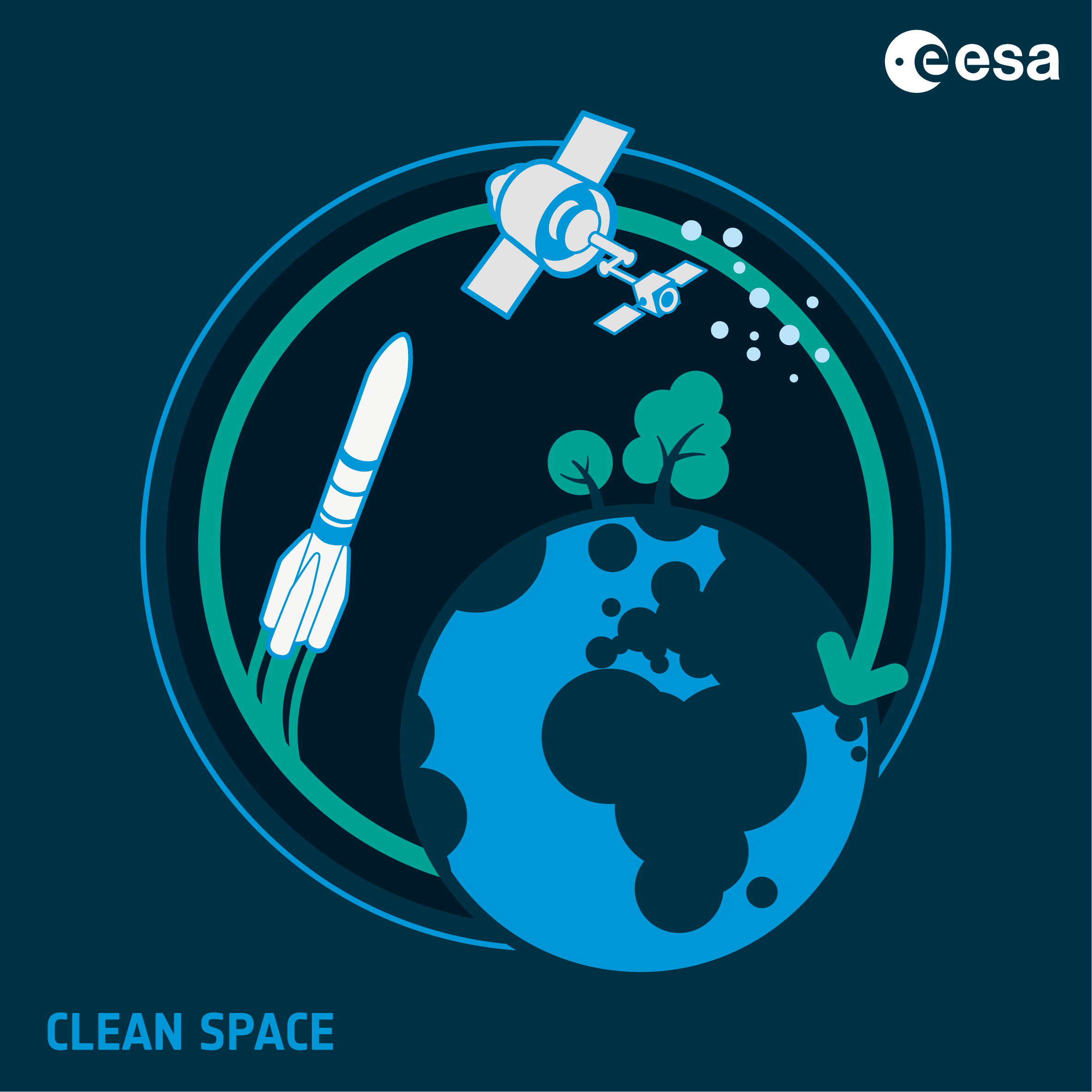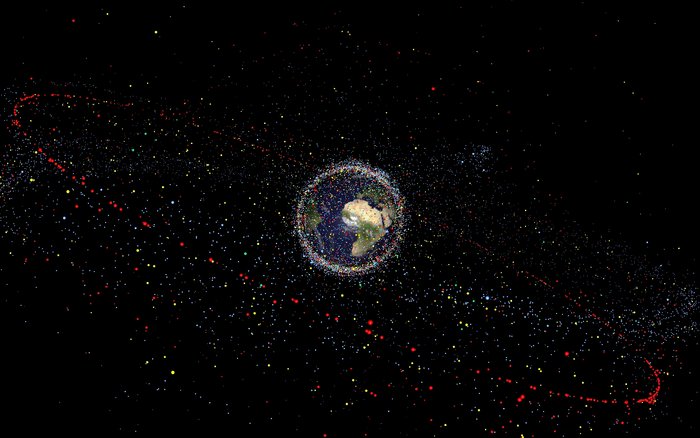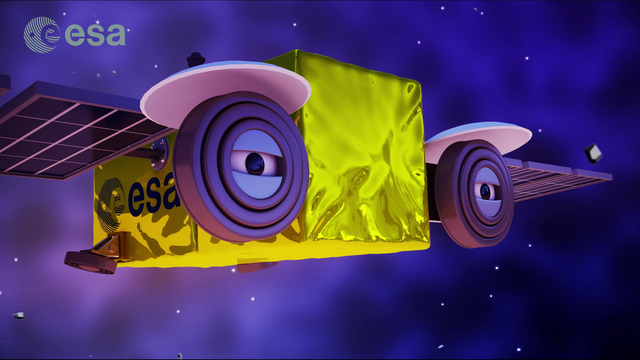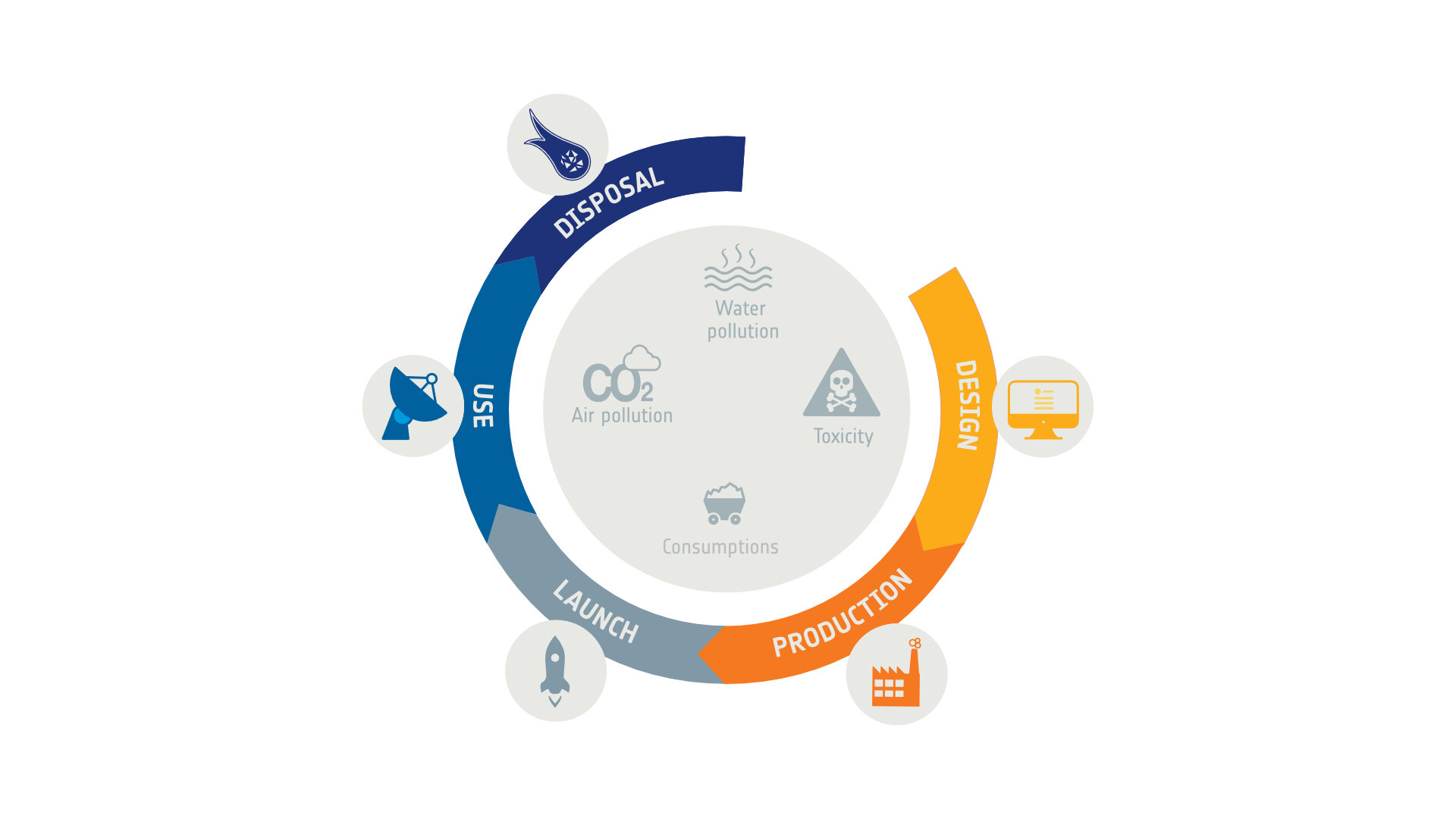For 5 years ESA has been carrying out studies about the environmental impacts of its missions. The next move is to design a green satellite, reducing the environmental impacts compared to a traditionally designed one. This will not be an easy task.
In 2009 ESA carried out an internal study called ECOSAT when for the first time space and environmental specialists sat together. While we, as space experts, quickly discovered that evaluating environmental impacts is a complex task, no matter the product or the activity you assess, the environmental specialists got to understand the complexity of a space mission.
Following ECOSAT, ESA went deeper, pioneering the application of Life Cycle Assessment (LCA) to the space sector, carrying out studies of the environmental impacts of several space missions as well as the European launcher family. This resulted in a handbook containing guidelines on how to use LCA for space, which will be published in the coming weeks.
Our journey through LCA for space led us to look at many different environmental indicators among which one can find the well-known Global Warming Potential (CO2) but also Ozone Depletion Potential, Human Toxicity Potential, Mineral/Fossil Resource Depletion Potential, Eutrophication Potential, etc.

Credits: S. Hendriks/AWI
By now we have a comprehensive set of data about the environmental impacts of launchers and of space missions, namely earth observation, meteorological and communication satellites. We also developed special databases for materials, processes and propellants specific to the space sector. This database will be available to European Stakeholders before the end of the year.
This work resulted in identifying the main environmental impacts – known as hotspots – of a space mission. In other words, at ESA we now have a good idea of what to work on in order to reduce the overall environmental of space missions.
It is now time to work with the space industry to design a satellite which minimizes environmental impacts, meaning a mission with reduced environmental impacts compared to a traditionally designed one.
This is the objective of the Invitation to Tender which will be issued on EMITS in the coming weeks: GreenSat.
Such a project will require a rethinking of existing procedures and technologies, therefore creativity will be vital. But whilst this is a futuristic design, appropriate expertise should ensure that ideas remain feasible.
GreenSat will be the first study worldwide dedicated to designing an environmentally friendly satellite. It is a General Study Progamme (GSP) study that will be run by ESA Clean Space with the winner of the ITT. We hope you’re as excited about it as we are.





Discussion: no comments